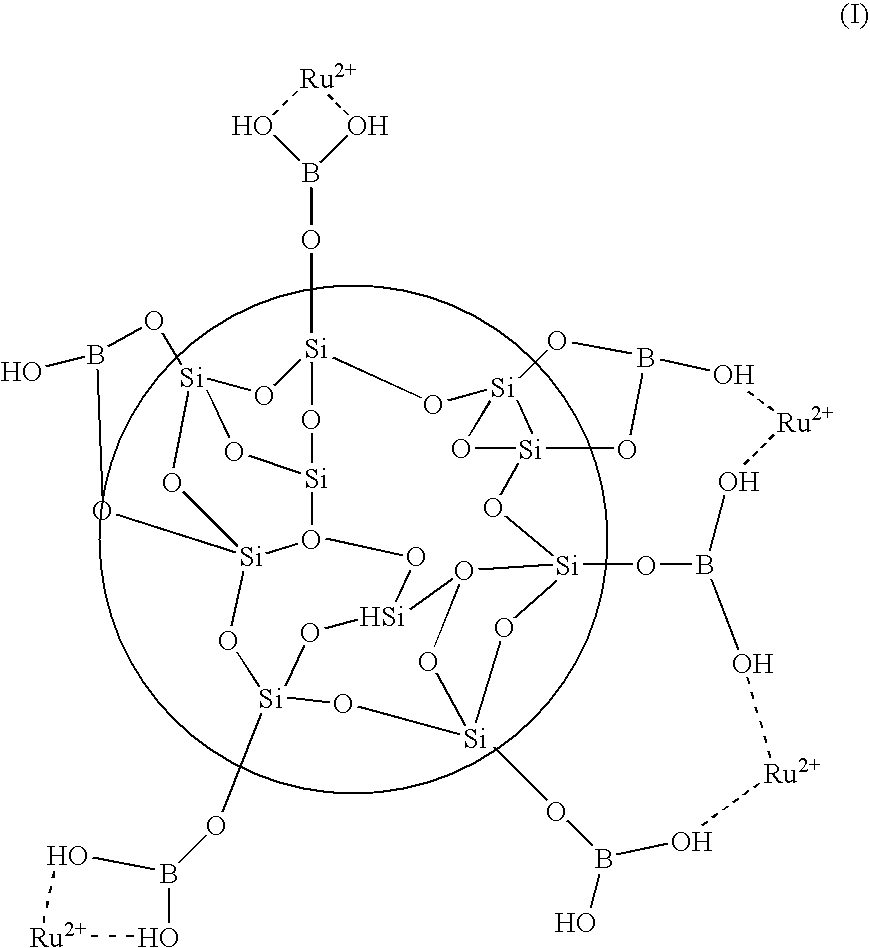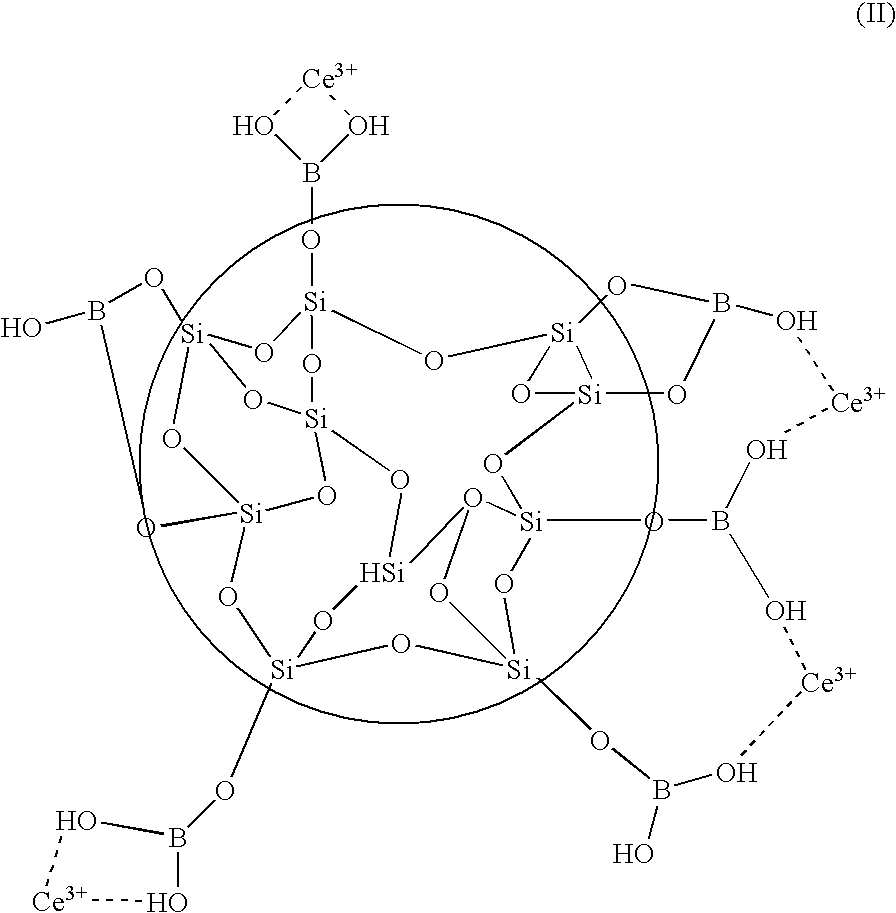Stable proton exchange membranes and membrane electrode assemblies
a proton exchange membrane and membrane electrode technology, applied in the direction of fuel cell details, electrochemical generators, cell components, etc., can solve the problems of compromising membrane viability and performance, and achieve the effect of increasing the oxidative stability of ion exchange polymers and peroxide radical resistan
- Summary
- Abstract
- Description
- Claims
- Application Information
AI Technical Summary
Benefits of technology
Problems solved by technology
Method used
Image
Examples
examples
[0048]The examples are directed to the preparation of metal-modified colloidal silica and its use with perfluorinated membranes of fuel cell MEAs. Various bimetallic surface coated colloidal silica particles were prepared and used to treat proton exchange membranes suitable for use in MEAs. Sample membranes were tested for oxidative stability according to a hydrogen peroxide stability test.
[0049]In the hydrogen peroxide stability test, the decomposition of various membranes due to the action of H2O2 on the membrane in the presence of Fe2+ catalyst was measured. The decomposition of the membrane was determined by measuring the amount of hydrogen fluoride that is released from the membrane during a reaction with hydrogen peroxide radicals.
[0050]Part A of the examples describes the preparation of bimetallic surface coated silica colloidal particles. Part B describes the preparation and properties of PEMs imbibed with the bimetallic modified silica of Part A. Part C describes the prepar...
PUM
| Property | Measurement | Unit |
|---|---|---|
| mean particle diameter | aaaaa | aaaaa |
| mean particle diameter | aaaaa | aaaaa |
| mean particle diameter | aaaaa | aaaaa |
Abstract
Description
Claims
Application Information
 Login to View More
Login to View More - R&D
- Intellectual Property
- Life Sciences
- Materials
- Tech Scout
- Unparalleled Data Quality
- Higher Quality Content
- 60% Fewer Hallucinations
Browse by: Latest US Patents, China's latest patents, Technical Efficacy Thesaurus, Application Domain, Technology Topic, Popular Technical Reports.
© 2025 PatSnap. All rights reserved.Legal|Privacy policy|Modern Slavery Act Transparency Statement|Sitemap|About US| Contact US: help@patsnap.com


